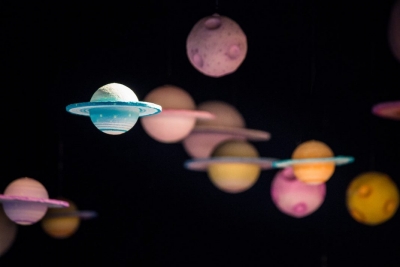What do we know about KIC-7340288 b and other exoplanets discovered last month?

The world beyond our own has always been a subject of curiosity and fascination. Space exploration projects over the years have succeeded in understanding the universe better. What are other planets in our solar system like? Do aliens realty exist? If so, where could they possibly live? These are some of the questions the projects have been constantly trying to seek answers to.
The Kepler Space Telescope was launched, in, 2009 to find answers to one such question, — how many earth-sized planets are there in the habitable zones of other stars in the Milky Way? The space observatory outlived its initial planned Lifetime of three-and-a-half years. It was retired, in October 2018. In its nine years of operation, Kepler discovered 2,662 planets and revealed, vital details about planetary systems.
Now, combing through data from Kepler, Michelle Kunivnoto, a PhD candidate of astronomy at the University of British Columbia, has discovered 17 new planets. This includes a potentially habitable Earth-sized world, named, KIC-7340288 b.
What are exoplanets?
On a clear night sky, you see thousands and thousands of stars. About 200 to 400 billion stars make up our galaxy, the Milky Way. We know quite a bit about Earth and other planets that orbit the Sun. Do other stars have planets orbiting them? Yes, they do. Astronomers have discovered about 3,694 such planets in more than 2,000 star systems since 1995.
These planets which are outside the solar system and orbiting a star are called exoplanets (extra+solar planets). There are also those that are outside a star system. They are called rogue exoplanets.
What do we know about KIC-7340288 b and other exoplanets discovered last month?
KIC-7340288 b, about 1,000 light-years away from, Earth, is in the habitable zone of its star. It is just one and a half times the size of Earth - small enough to be considered, rocky, instead of gaseous like the giant planets of the solar system.
A year on KIC-7340288 b has 142 days. It orbits its star at 0.444 Astronomical Units (AU, the distance between Earth and the Sun) - just bigger than Mercury's orbit in our solar system.
The planet gets about a third of the tight that Earth gets from the Sun.
Of the other 16 new planets discovered, the smallest is only two-thirds the size of Earth. It is one of the smallest planets to be found with Kepler so far.
Who is Michelle Kunimato?
Michelle Kunimoto is a doctoral candidate of astronomy at the University of British Columbia. This isn't the first time Kunimoto has discovered planets. She found four while she worked on her undergraduate degree.
How did Kepler detect planets?
When a planet passes in front of a star, the event is called a "transit. On Earth, we can observe an occasional Venus or Mercury transit. These are seen as a small black dot travelling across the Sun as the planet (Venus or Mercury) passes between the Sun and us, blocking sunlight. The Kepler detected planets using this transit method, that is, the telescope spotted planets by looking for tiny dips in the brightness of a star caused by the planets' transit.
Kepler first carried out its work by staring at more than 1,50,000 stars simultaneously. Once a planet is detected, its orbital size, temperature and the temperature of its parent star are calculated to find out if the planet is habitable.
The Kepler mission warranted that the stars be monitored and their brightness be measured continuously for transits. This meant that the Sun should not block the field of view of the telescope. Hence for the first four years, Kepler was pointed, to a field in the constellations of Cygnus, Lyra, and, Draco, which are well out of the ecliptic plane of the Sun.
What makes a planet habitable?
››Energy, carbon and Liquid water are the most important factors for Life to exist.
» Life possibility depends on whether the planet exists within the habitable zone. The habitable zone around a star is the range of distance within which temperatures allow water (essential for life) to remain Liquid on the surface of a planet.
» The host star should, be stable. Its Luminosity should not be too severe to burn up the planet.
» The planet must be made up of rocks, and not gases.
» It should not have a very tow mass. Low mass means Low gravity. Low gravity cannot retain atmosphere. Further, the atmosphere should have a protective Layer of essential gases.
» A rapidly rotating magnetic field to protect the planet from flares from nearby stars, is also vital.
What is the basis on which exoplanets are named?
Exoplanets orbiting a single star are christened by taking the name of the parent star and adding a tower case Letter to it. The first planet discovered in a system is given the designation "b” (the parent star is considered to be "a") and Later planets are given subsequent Letters.
Picture Credit : Google
Comments
No comments